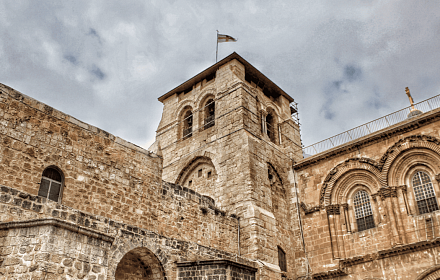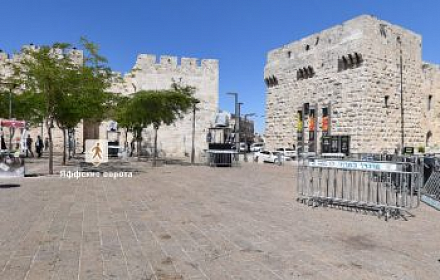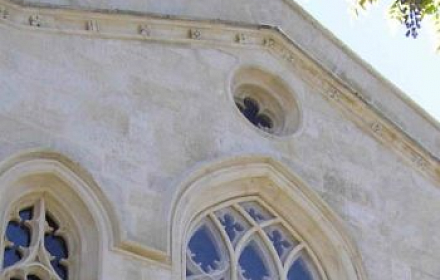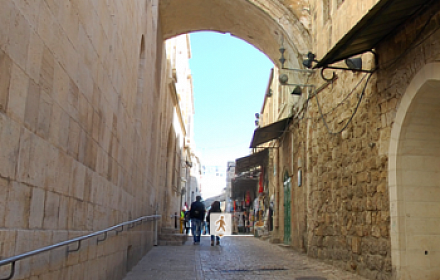About Virtual Tour
Street View
There are many mostly Christian churches, chapels and cloisters located in the vicinity of Jerusalem’s Church of the Holy Sepulcher – the greatest shrine of Christianity. One of such buildings is an underground Coptic Church dedicated to Saint Helen, which is located on the lower floor. You can access it by going down 29 steep stairs directly from the gallery. Let's go on a virtual pilgrimage.Copts are descendants of ancient Egyptians – the first people of the Earth to adopt Christianity. In the Holy Land the Coptic Orthodox Church is presented both by monks and by lay people. According to tradition, Copts were in the retinue of Queen Helen when she arrived to Jerusalem seeking the True Cross. There is a stone bench where St. Helen sat during the excavations. The Coptic account of the events claims that the True Cross was found not in the Chapel of the Invention of the Holy Cross (in the lower level of the Church of the Holy Sepulcher), but on the spot where today stands St. Helen’s Cistern for groundwater, and not rainwater, which was generally collected from rooftops in other Jerusalem reservoirs of this time period. Today, as many centuries ago, this cistern is still filled with water and shown to visitors of this church.
Entrance
The interiors of this underground Coptic Church are very ascetic as a tribute to Saint Queen Helen. Her contemporaries noted that she preferred modesty in everything. The dome of the church rests on four ancient monolithic columns. The windows in the dome are located at the ground level and ensure the passage of light.The observant visitor will pay attention to mosaics covering the floor between the columns. The themes reflected in mosaic artworks are not Coptic — they are dedicated to the history of Armenia, its major attractions and most venerated shrines. This could be explained by the fact that today St. Helen Coptic Church belongs to the Armenian Apostolic Church. Just a few decades ago it was possessed by the Ethiopian Orthodox Tewahedo Church; even prior to this it was affiliated with Coptic Orthodox Church, which is still in charge of several churches, chapels and places of worship in the Holy Land.
The issue of ownership is not as important as the history of this ancient church. It is difficult to determine its age with precision, but the roots of this building lie in the ancient period. During restoration works in 1970s, several discoveries were made to the east of St. Helen Church: a cave containing a drawing of a Roman ship, two low walls which supported the platform of Hadrian's 2nd-century pagan temple, and a higher 4th-century wall built to support the basilica from the era of Constantine the Great. The cave has been converted into the Chapel of Saint Vartan, and created an artificial walkway to access this chapel from St. Helen Church.
Church
St. Helen Church has two apses. The northern altar is dedicated to Saint Dismas — according to a church legend, this is the name of the penitent thief who repented on the cross and was the first of the mankind to be awarded the honor of entering with Jesus Christ into the Paradise. The central altar is dedicated to Saint Helen and her contemporary – Gregory the Illuminator. Armenian legend has it that this saint had been long praying — and while visiting Jerusalem’s Church of the Holy Sepulcher, he was awarded with the Descent of the Holy Fire. On the right side of the church there are thirteen steps leading to the cave where the True Cross was found. The walls on both sides are covered with many crosses carved by Crusaders and medieval pilgrims. In fact, some modern-day pilgrims also attempt to carve their own crosses. Never try to do that — in order to avoid legal troubles.The small dimensions of the underground Coptic church — 20 by 30 meters — have a historical explanation. Initially, the room was a martyrium’s crypt from the era of emperor Constantine the Great. During Persian invasion by the warriors of king Khosrow II, and ensuing Arab domination, the basilica’s entrance was buried and for many centuries it was considered lost. Only in the 12th century at the time of Crusaders’ Jerusalem Kingdom, when a monumental Romanesque-style reconstruction of the Church of the Holy Sepulcher began, the workers discovered the original ground level of Hadrian’s pagan temple. Soon, it was decided to transform this hollow space into a church dedicated to Saint Helen. This Christian church built by medieval architects has been known under its current name ever since.
Rediscovered by European settlers, furnished by Copts, acquired by Armenians — the underground church dedicated to Saint Helen annually attracts thousands of pilgrims and tourists from Christian countries and other parts of the world.
Send donation
If you are in a difficult financial situation, we will light the candle for free. For that purpose email us at coordinator@santosepulcro.co.il
Payment Methods









